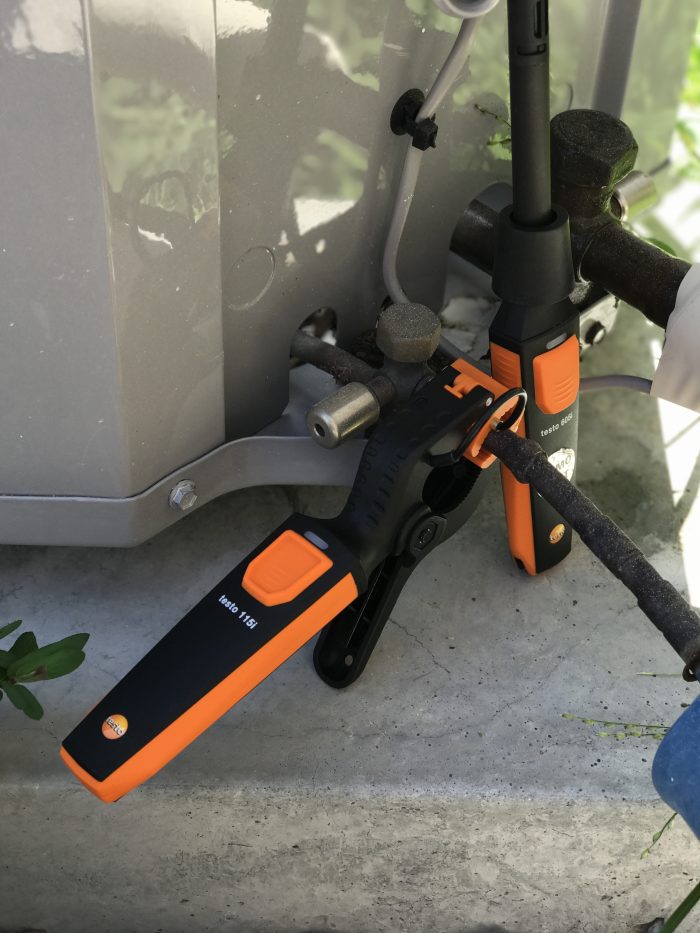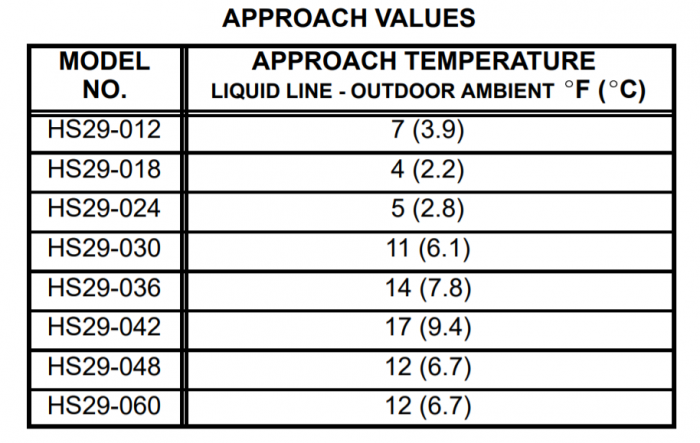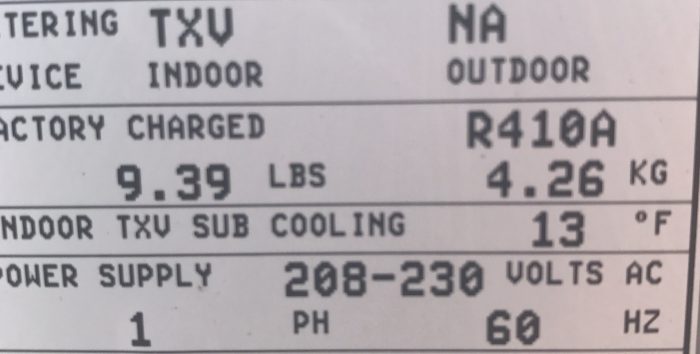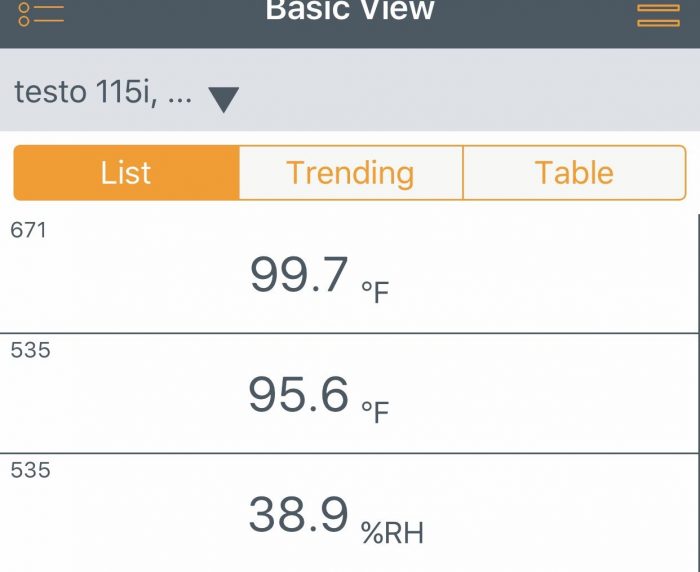Get Tech Tips
Subscribe to free tech tips.
The “Approach” Method of Charging and Condenser Efficiency

We have discussed many methods for checking a refrigerant charge without connecting gauges over the last few years. Recently, I've been thinking about the “approach” method of charging that many Lennox systems require.
What is the Approach Method?
The “approach” simply refers to the temperature difference between the liquid line leaving the condenser and the air entering the condenser. If you take readings in both places, the liquid line will be warmer; we just need to know how many degrees warmer. The approach method does not require gauges to be connected to the system, but it does require a good temperature reading on the liquid line and suction line (shown using the Testo 115i clamp and 605i thermo-hygrometer smart probes).
When taking an approach reading, make sure to take the air temperature in the shade entering the coil and ensure that you have good contact between your other sensor and the liquid line.

The difference in temperature between the liquid line and the outdoor temperature can help illustrate the amount of refrigerant in a system and the efficiency of the condenser coil. A coil that rejects more heat will have a leaving temperature that is lower and, therefore, closer to the outdoor temperature. The liquid line exiting condenser should never be colder than the outdoor air, nor can it be without a refrigerant restriction before the measurement point.
Here is an approach method chart for an older 11 SEER Lennox system showing the designed approach levels:

While most manufacturers don't publish an approach value, you can estimate the approach by finding the CTOA (condensing temperature over ambient) for the system you are servicing and subtracting the design subcooling.
6 – 10 SEER Equipment (Older than 1991) = 30°F CTOA
10 -12 SEER Equipment (1992 – 2005) = 25°F CTOA
13 – 15 SEER Equipment (2006 – Present) = 20°F CTOA
16 SEER+ Equipment (2006 – Present) = 15°F CTOA
I did this test on a Carrier 14 SEER system at my office. So, the CTOA would be approximately 20°.
Then, find the design subcooling. In this case, it is 13°F.
Subtract 13°F from 20°F, and my estimated approach is 7°F +/- 3°F. I used the Testo 115i to take the liquid line temperature and the 605i to take the outdoor temperature using the Testo Smart Probes App, and I got an approach of 4.1°F, as shown below.
More than anything else, you can use the approach method in conjunction with other readings to show the effectiveness of the condenser at rejecting heat.
Diagnostic Considerations
If the system superheat and subcooling are in range, but the approach is high (liquid line temperature high in relation to the outdoor air), it is an indication that the condenser should be looked at for condition, cleanliness, condenser fan size and operation, and fan blade positioning. However, if the approach is low, it can indicate refrigerant restriction when combined with low suction, high superheat, and normal to high subcooling.
If the approach value is low with normal to low superheat and normal to high suction pressure and high subcooling, it is an indication of overcharge. (Also, if you want to learn more about using superheat, subcooling, and other key measurements for diagnosis, you may want to check out the tech tip about the Five Pillars of HVAC/R Diagnosis.)
The approach method is only highly useful by itself (without gauges) on a system that has been previously benchmarked or commissioned, and the CTOA and subcooling or the approach previously marked, or on systems (like Lennox) that provide a target approach specific to the model.
—Bryan
P.S. – TruTech Tools has a guide to recharging A/C units, and it includes the Lennox approach method (#5 on the list). If you're interested in their charging tips, click the link to check it out.













Comments
this information is excellent, even working with HVAC for few years, this information is rarely seen at any place. thank you so much. I appreciated.
this information is excellent, even working with HVAC for few years, this information is rarely seen at any place. thank you so much. I appreciated.
To leave a comment, you need to log in.
Log In